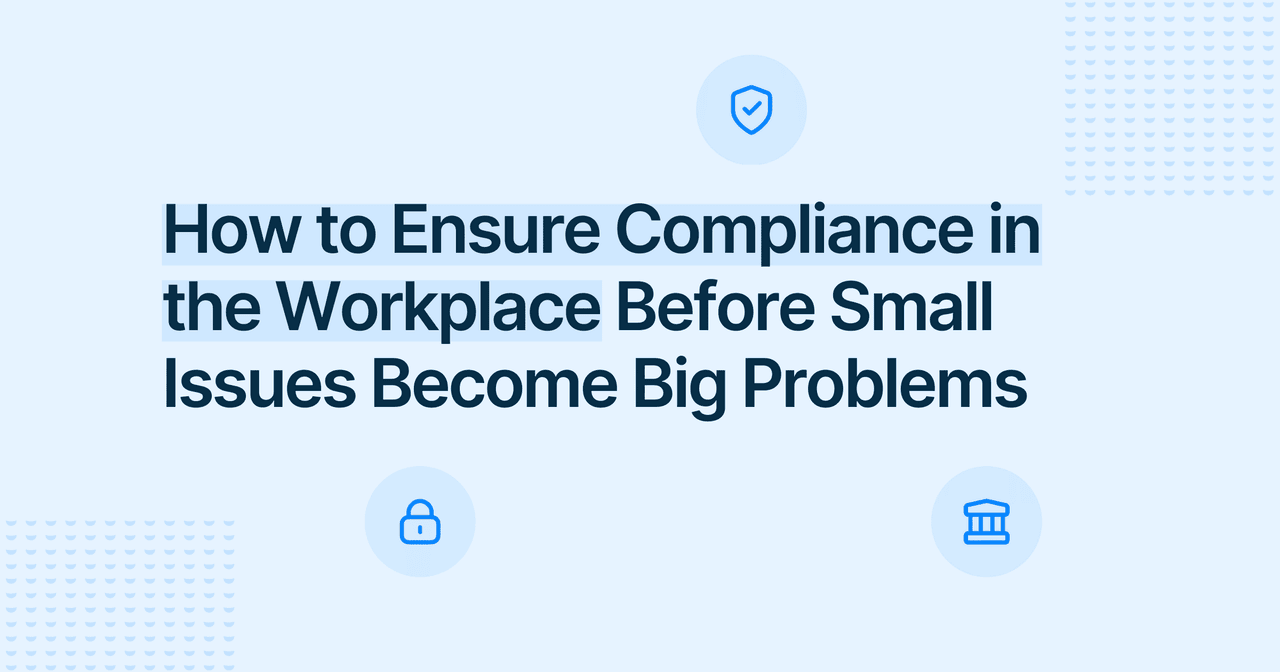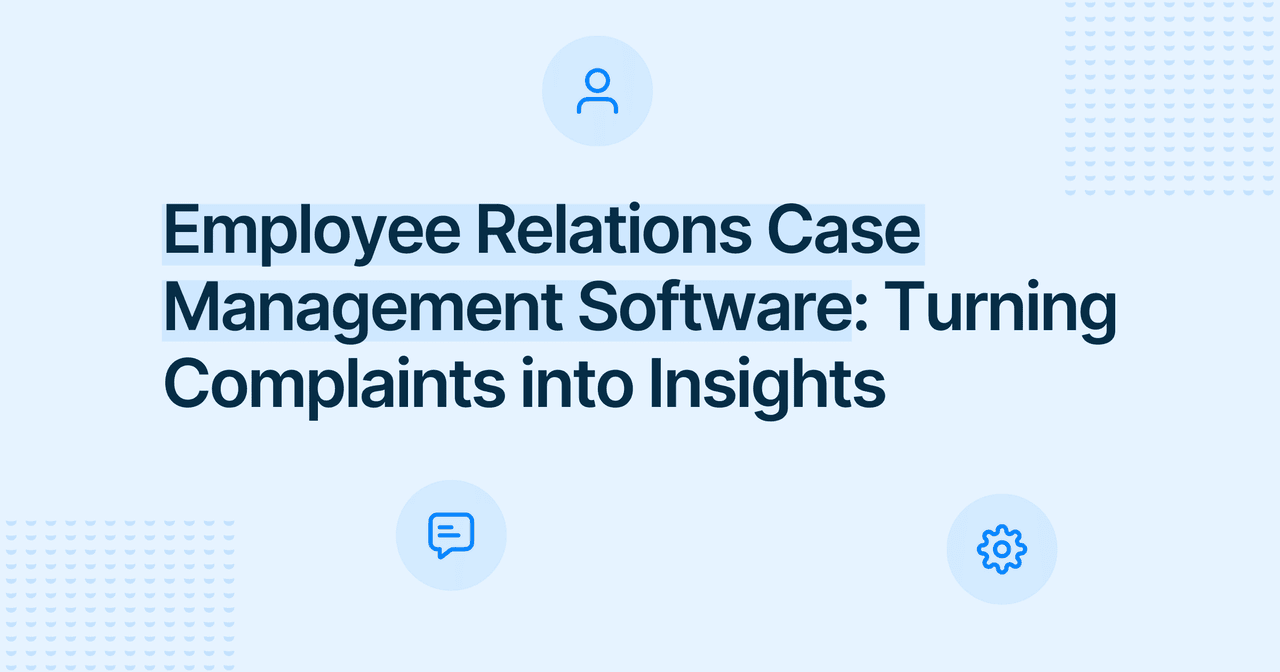



Bring All Confidential Reports Into One Secure Place
We’ll assess your needs and recommend the right setup for anonymous reporting or surveys - aligned with your compliance or HR goals.
Whistleblowing

Alaa El-Shaarawi
Copywriter and Content Manager
Published
2025-10-20
Reading time
6 min


Table of contents
Subscribe to our newsletter
Ask any compliance or HR leader about whistleblowing in Australia, and you’ll often hear the same frustration: “We have a policy, but no one seems to know how to use it.”
Since Australia strengthened its whistleblower protection laws in 2020, many organizations have ticked the compliance box on paper but still struggle with the practical side: who’s covered, what’s reportable, and how to manage disclosures without breaching confidentiality.
That’s where the gap lies: between legal compliance and operational clarity.
This article breaks down what Australian whistleblowing laws really require, what’s evolving, and how to turn legal obligations into systems that work in the real world.

Before you can think about building a system, you need to know what the law actually requires. Under the Corporations Act 2001 (Cth) and ASIC's Regulatory Guide 270 (RG 270), organisations must not only have a whistleblower policy but also make it operational.
Your policy should cover:
Because compliance isn’t just a document; it’s a reliable system that actually functions when someone speaks up.
Protections extend beyond current employees to:
Your system must be ready for disclosures from a wide network of stakeholders. Before acting on a disclosure, confirm the whistleblower meets eligibility criteria under the Corporations Act or PID Act to avoid mishandling reports.
Disclosures must relate to material breaches or serious misconduct, including:
Focus your reporting system on serious and systemic issues. Minor or personal grievances may fall outside protected disclosure laws.
Organisations must provide accessible channels, such as:
These channels must protect confidentiality, prevent reprisal, and be regularly tested to make sure they work in real scenarios. FaceUp is designed to meet these requirements, supporting multiple channels while keeping whistleblower identity confidential.
Eligible whistleblowers receive:
Staff should understand when disclosures can go to journalists or parliamentarians directly under emergency or public interest conditions.
If your organisation fits one of the following, a formal, compliant whistleblower policy is legally required:
Even if your organisation doesn’t meet these thresholds, best practice is to implement a policy anyway. Failure to comply may result in civil penalties, liability, and reputational damage.
Under Australian whistleblower protection laws, a disclosure qualifies as protected if it’s made on reasonable grounds and relates to a breach of the law, misconduct, or an improper state of affairs within the organisation.
Many organisations struggle to turn these legal definitions into a clear, compliant policy. FaceUp’s Whistleblowing Policy Template, aligned with ASIC's RG 270, makes this process simple, helping you meet your legal obligations while building trust in your reporting system.
Most compliance teams already have the basics in place, but issues often arise when policies move from theory to practice. Below are some of the most common blind spots we see during audits and reviews:
ASIC’s RG 270 makes clear that compliance isn’t just a document requirement. It’s about making sure systems actually work: that whistleblower reports are received, investigated, and managed properly under the law.
To reduce these blind spots and strengthen compliance, integrate your whistleblowing processes with HR, risk management, and governance frameworks.
Compliance requirements are evolving, and the coming years are set to introduce significant changes for whistleblowing in Australia. Two updates in particular deserve attention:
This Bill would establish an independent authority to oversee and support whistleblowers at the federal level, coordinating investigations and upholding compliance consistency across industries.
This Act updates obligations for aged-care providers, requiring that whistleblowing procedures align with safety, quality, and complaints-handling frameworks. It reflects a growing expectation: sector-specific compliance must integrate whistleblower protection.

This change is part of a broader shift across the Australian Government. Agencies like ASIC, APRA, and the Attorney-General’s Department are tightening whistleblower protection laws and anti-corruption measures to strengthen accountability across both the public and private sectors.
Turning legal obligations into a functional system requires consistency, transparency, and the right tools. These steps can help your whistleblowing process stand up to both internal and external review:
Map your organisation against the Corporations Act thresholds. If there’s any doubt, adopt a policy anyway. Over-compliance is safer than the risk of penalties.
Train all staff on eligible whistleblowers and what constitutes a protected disclosure, including employees, contractors, volunteers, suppliers, and former staff. Use real-life examples in training to make it tangible.
Offer multiple options: confidential hotline, secure web portal/app, or written submissions. Test them regularly to make sure anonymity, encryption, and accessibility are fully functional.
Connect HR, Legal, Risk, and senior management workflows with a central case management system. Assign clear ownership of investigations, follow-ups, and reporting to avoid blind spots.
Provide practical guidance on handling disclosures, maintaining confidentiality, avoiding retaliation, and documentation every step. Include scenario-based exercises for realistic practice.
Keep secure, auditable records of all disclosures, investigations, communications, and resolutions. Make it easy to report internally and to regulators if required.
Audit your policy and processes at least annually, or whenever laws change (e.g., Aged Care Act 2024 or future whistleblower reforms). Use feedback from employees and managers to fine-tune processes.
Start with a compliant whistleblower policy template but tailor it to your organisation’s structure, sector, and risk profile. Use platforms like FaceUp to operationalise the policy, track disclosures, and generate audit-ready reports.

Maintaining compliance is easier when the right systems are in place. FaceUp’s Whistleblowing Platform provides secure, purpose-built tools designed to simplify whistleblowing management and meet ASIC and Corporations Act requirements.
Key features include:
When regulators, auditors, or employees ask how your whistleblower system works, “we have a policy” is no longer enough. They expect evidence of accessibility, confidentiality, and follow-through.
Organisations that treat whistleblowing as a compliance process, not a culture initiative, tend to get it right: clear roles, documented workflows, and systems that perform under scrutiny.
Ready to move from paperwork to practical compliance? Book a free demo to see how FaceUp makes compliance both simpler and more defensible.




We’ll assess your needs and recommend the right setup for anonymous reporting or surveys - aligned with your compliance or HR goals.
Keep Reading

Alaa El-Shaarawi2025-12-048 min
Legal & Compliance

Alaa El-Shaarawi2025-12-037 min
Legal & Compliance

Alaa El-Shaarawi2025-12-029 min
Legal & Compliance

Alaa El-Shaarawi2025-12-017 min
Employee Relations